Planting Daffodils Was Never So Easy: [Care and Planting Guide]
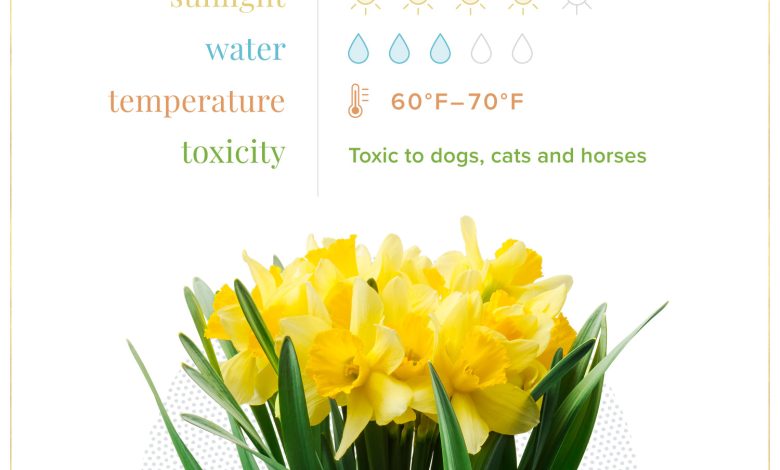
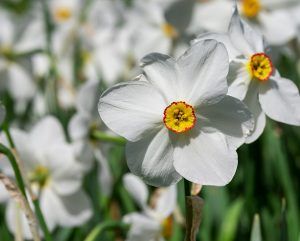 The daffodil is a plant native to the temperate zones of Europe, Asia and Africa, from the Amaryllidaceae family, whose scientific name is Narcissus.
The daffodil is a plant native to the temperate zones of Europe, Asia and Africa, from the Amaryllidaceae family, whose scientific name is Narcissus.
It is a plant from the middle of the 19th century when it became popular in such a way that this fanaticism lasts until today, when there is a massive production of mutants and hybrids, to the point that currently the number of its varieties is counted at 100.
Although it produces yellow, white and orange flowers, the traditional color is yellow, which is associated with solar energy, so the daffodil is a reference to radiance, energy and vitality.
But the plant also symbolizes unrequited love, and takes the name of the Greek god Narcissus, an obsessive mythological character, in love with himself, who drowned trying to grab his image in the water.
Important points when planting daffodils:
- When to sow?Between September and November.
- Where to sow?In the garden or in a pot, without direct sun.
- How to prepare the land? Get a soil with good drainage.
- How do we water?Do not apply water to the flower but to the soil directly.
- What pests and diseases does it have? Pests do not like the taste of the flowers, but it can be attacked by flies and mites.
What characteristics do daffodils have?
| Common name | Daffodil, narcissus. |
| botanical name | Narcissus spp. |
| Family | Amaryllidaceae. |
| plant type | Bulb, perennial. |
| maturity size | 15 to 80 centimeters high, 15 to 30 centimeters wide. |
| Sun exposure | Complete, partial. |
| soil type | Rich, moist but well drained. |
| soil pH | Neutral, acid. |
| flowering time | Late winter, spring. |
| flower color | Yellow, white, orange, pink. |
| hardiness zones | 4-8 (USDA). |
| native area | Europe, North Africa. |
| Toxicity | Toxic to humans and animals. |
It is a beautiful plant that is very popular due to the low demand for its care and its good adaptation to soils and climates, used in the decoration of spaces inside or outside the house, in gardens, terraces, balconies and pots, being the plant bulbosa that is best naturalized.
It blooms in early spring, and the main characteristic of its flowers is that they are trumpet-shaped. The daffodil has different representations in some countries, for example, there are Asian countries where it is considered a symbol of happiness, and that is why it is used to wish happiness in the New Year.
In the Hebrew tradition it is considered as the love songs of spring, and in China it is a symbol of good luck. In general, its symbolism leads to its use to apologize, apologize, or simply show the value of a lasting friendship.
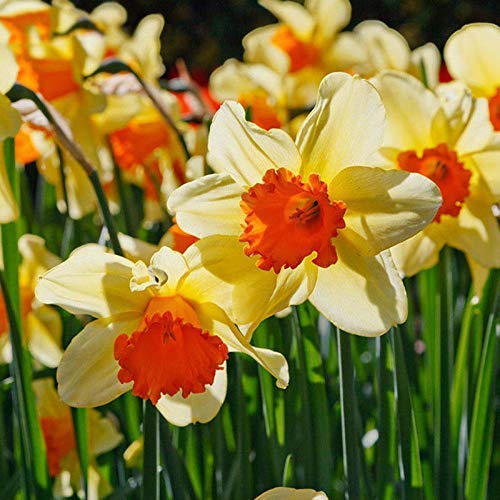
It is also very common for the brides’ bouquet at the time of marriage to be white daffodils which, in addition to their generous aroma, give the idea of sincere love. For this reason, its flowers are widely used in the decoration of the marriage scene.
One of its characteristics is that we can find them fully grown in flower in winter, so we can use them as a decorative accessory.
The daffodil is a plant used to mitigate anxiety and hyperactivity disorders, since the smell of its flowers and its fragrance, obtained by the decantation of its petals, is capable of providing tranquility and peace, because it produces relaxation.
Precisely for this reason, because of its fragrance, it is one of the most expensive essences in the world. Daffodil has astringent, antispasmodic, and febrifuge properties and is considered an effective topical emmenagogue.
When to plant daffodils?
The daffodil planting time is between the months of September and November. Some varieties of the daffodil that grow by the water have the shape of a person with their heads down, and so it seems that, like Narcissus the Greek, they look at their reflection.
Where to plant daffodils?
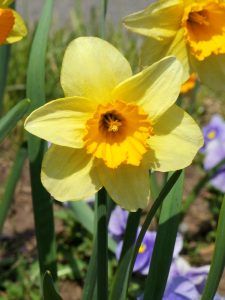 The ideal place to plant it is one where the sun’s rays indirectly bathe it during a good part of the day.
The ideal place to plant it is one where the sun’s rays indirectly bathe it during a good part of the day.
It is an indoor and outdoor plant so it can be in gardens, terraces, balconies or in the corners of the house.
The cultivation will be done by planting the bulbs in the ground during the fall; these will root quickly and leaves will appear as a preliminary step to flowering.
It should be planted leaving distances of 10 cm between them, and it is recommended not to mix it with other varieties to which it can cause serious problems, because its sap is toxic.
It is a comfortable plant, easy to grow, which can also be placed in a small container or in handmade pots, where we will create a beautiful decorative environment for the home where we will enjoy its exquisite aroma.
How to prepare the land?
The daffodil is not a very demanding plant in terms of soil, but yes, we must provide it with a soil with good drainage, a place where the soil is not hard because it will not drain well.
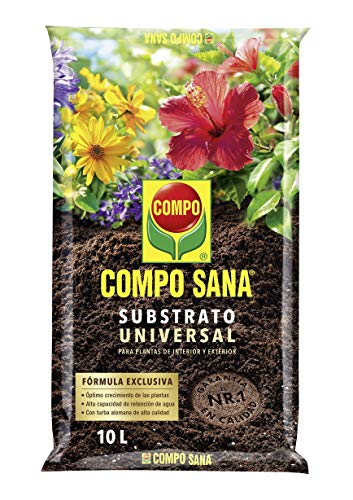
Drainage is essential, both in direct soil and in pots, because it will avoid the hateful waterlogging that does so much damage to plants.
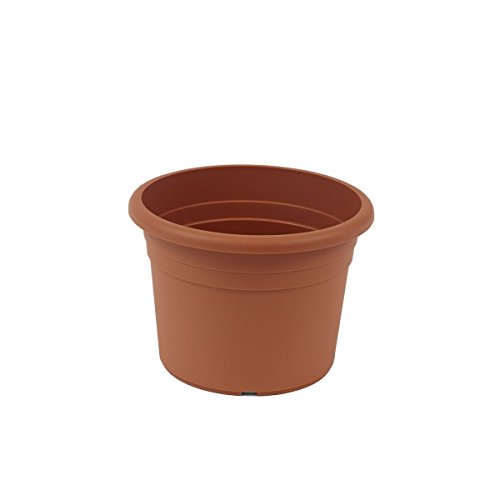
How do we plant a daffodil step by step?
Once we have chosen the place where we will plant, we will wait for the months of September and November, when we will follow the following steps:
- We will dig deep holes to place the bulbs with the tips below the surface.
- The smaller bulbs should be placed shallowly.
- There should be a distance of 10 cm between the bulbs.
- We will water with a sprinkler.
Regarding plants acquired in gardens or nurseries, the following steps must be followed:
- Find a deep container, with good drainage, where the roots can grow underneath without any difficulty.
- We will add fertilized soil up to the middle of the container, before placing the plant.
- We will place the plant and add more soil.
- When the soil dries out, we must be careful to add water, because this plant needs a lot of freshness.
What care do daffodils need?
Although it may seem otherwise, growing daffodils is easy, as long as the following care guidelines are followed. We can apply a series of simple care to the daffodil to ensure its constant flowering.
Lightning
Excessive light must be avoided at all costs, because the direct incidence of sunlight can burn its leaves and wither its flowers.
Temperature
It is necessary to take into account that it is a plant that develops in temperatures of 15-17°C, with a minimum temperature of 1-3°C and a maximum of 23°C. In general, the temperature should be cool, so we will place the plant in a well-ventilated place without excessive drafts.
Irrigation
Be careful when watering. Water should not be applied to the flower, but the soil should always be well drained, that is, without ever lacking water. We can use a small shovel to dig up the soil, and if it is dry, it is time to apply a little water directly on the ground.

Do not abuse the water because it can drown and its roots rot, in which case the plant could die.
Pass
We will fertilize after flowering so that the bulb absorbs nutrients, with liquid fertilizer for flowering plants. Organic fertilizer or special fertilizer for bulbous plants.
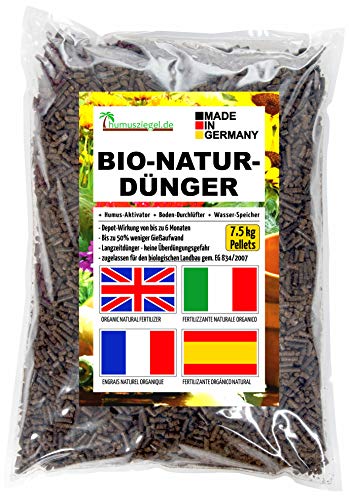
We will do the fertilizer until the leaves turn yellow so that the bulb has more reserves the following year.
Pruning
When pruning we must take into account that daffodils use their leaves to create energy. That energy is used, in turn, in the creation of the following year’s flower. For this reason, the leaves of the daffodil should not be cut until they turn yellow; if we do it before, the bulb will not produce flowers.
Transplant
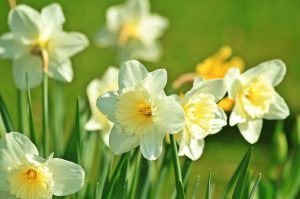 The ideal is to acquire a bush with the largest number of unopened flowers. After flowering, it is advisable to transplant it into a larger pot and place it in a corner of the garden, preferably under a tree.
The ideal is to acquire a bush with the largest number of unopened flowers. After flowering, it is advisable to transplant it into a larger pot and place it in a corner of the garden, preferably under a tree.
In May its cycle ends, but we will have achieved a new flowering with the bulb that remains underground.
The new flowering will occur in February and March. That is why the daffodil is one of the plants that announces the arrival of spring.
What pests and diseases affect daffodils?
The cultivation of the daffodil has the advantage that it is not a plant that suffers too much from pest attacks, like others, because the pests reject its taste.
Daffodils are famous for being nearly immune to serious pest and disease problems. But, in rare cases, some of the following problems may occur:
- Bulb rot is possible if daffodils are planted in poorly drained soil. Daffodils can also be affected by daffodil yellow stripe virus, which causes brown and yellow streaks on the foliage. Affected plants should be removed and destroyed.
- Daffodil flies lay eggs at the base of plants, which hatch and cause the larvae to bore into the bulbs. You may notice soft bulbs with worms inside them during routine bulb division. Affected bulbs should be discarded.
- Bulb mites weaken daffodils and are most likely on daffodils grown indoors for seasonal display. Various spray pesticides control them.
- Nematodes cause significant damage to foliage. There is no treatment for these microscopic soil worms, and you may have to stop growing daffodils in soil where they are present.
But it can be invaded by flies, slugs and mites, pests that we must attack quickly, washing with liquid soap and alcohol, pruning conveniently, in addition to applying nitrogen to the soil.
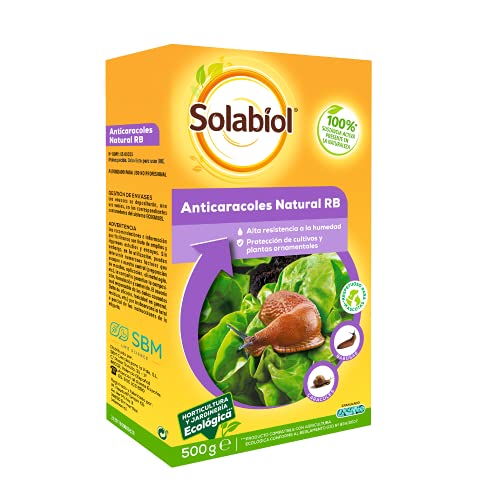
If it suffers from diseases such as basal rot, nematode or other viruses, due to excess humidity, it is urgent to change the soil and wash with warm water.
 watering the daffodils
watering the daffodils
Daffodils grow from bulbs reaching a height of 50 cm. The flowers are dressed in different colors depending on the type of daffodil you choose.
But always starting from the scheme of a flower per stem. Irrigation is a care that you must implement with conscience so that it gives its best blooms.
How to achieve it? This is what we will see just below.
Important points when watering daffodils:
- Irrigation frequency: every day in waterings spaced about two or three times each day on days of maximum heat. If the days are cooler, reduce.
- Irrigation method: by watering can.
- Optimum time of day for irrigation: throughout the day.
- Identify excess water: flaccid stems,lifeless flowers.
- Identify lack of water: plant that dries up, leaves that fall, flowers that do not grow and fall.
What watering needs do daffodils have?
Daffodils must have relative humidity in the soil in order to thrive.You will achieve this humidity with well-planned irrigation and ensuring that the soil has good drainage, because, as in the case of most bulbs, waterlogging does not do well.
The ideal is to apply more or less frequent irrigations but with a small amount of water.
How can we detect lack of watering in daffodils?
 Being bulbous plants, daffodils are especially delicate when it comes to humidity in the soil. Therefore, the plant will begin to dry out when it does not have a sufficient level of hydration.
Being bulbous plants, daffodils are especially delicate when it comes to humidity in the soil. Therefore, the plant will begin to dry out when it does not have a sufficient level of hydration.
The flowers will tend to grow very poorly at first and will probably drop off if the drought continues. In the case of foliage, it is most possible that the leaves turn yellow and become dry, and can fall off the plant quickly.
The nobility of the daffodil makes it easy to recover the plant if the drought is not very advanced, making a deep hydration of the soil. Afterwards, you will continue with the risks already established and little by little it will return to normal.
How often should we water daffodils?
Daffodil waterings should be established on a daily basis to improve their conditions.This amount of daily water must be divided into three parts, so that in each one you contribute a minimum amount of water.
The idea is to ensure that the substrate is very slightly moistened with each watering and to give it time to impregnate everything with the liquid. Of course, you must consider the environmental conditions of each season, since when it is cooler, the risks must be reduced.
If you are not doing well with the system of two or three daily irrigations due to your daily occupations, implement only one but trying to make it take time. That is, instead of adding all the water at once, spend at least 10 minutes so that the soil has a chance to absorb the liquid.
What is the best way to water daffodils?
The best way to water daffodils is with a watering can because it helps to supply the exact amount of water and, in addition, little by little. Most gardening watering cans come with a number of small diameter holes that are ideal for this task.
The important thing is to ensure that the flow is very low and that, if the system of 3 daily irrigations is to be applied, the amount of water is minimal in each one.
How do we detect excess water in daffodils?
Overwatering daffodils is, simply put, deadly. Being a bulbous plant, it does require an environment with good humidity, but nothing related to puddles. The first sign that you have overwatered is that the water will be visible on the surface of the earth.
Make sure it has good drainage, and if it does happen, put the pot in a spot where it can get rid of all the excess liquid. If there is an excess of irrigation that is not noticeable on the surface, the problem will go around the interior of the earth.
From there the bulb will begin to rot due to the presence of fungi associated with this humidity condition. Aerially, the plant will look flaccid, with stems that are not as firm as they are when healthy, and the flowers will look in poor condition.
Daffodils are beautiful when the time comes for them to give their great flowers and to enjoy that moment it is essential to take care of it every day. With all the information that we provide here, watering your daffodils will not be very complex. On the contrary, you will have the opportunity to work very safely.
Start now to apply these techniques and enjoy the gifts that nature offers us all with lots of love.
How to grow daffodils from seed
Daffodil seeds can take up to five or six years to develop into viable bulbous plants, so this method is rarely done except by professionals or very serious hobbyists experimenting with hybridization.
However, if you are patient enough to try, seed propagation begins:
- By harvesting the marble-sized pods that remain after the daffodil flowers fade. When these pods shrivel and turn brown, you can break them open to extract the seeds inside.
- Save the seeds until fall, and then plant them about 2cm deep in small pots or seed trays filled with potting mix or seed starting mix.
- Coloca las macetas en un lugar exterior protegido para que reciban un periodo de frío invernal. En primavera, las semillas germinarán y brotarán en pequeñas plántulas parecidas a la hierba.
- Sigue cultivándolas en sus pequeñas macetas durante al menos tres años.
- A partir de ese momento, las plantas tendrán pequeños bulbos que habrá que trasplantar sistemáticamente a macetas cada vez más grandes cada año.
- Al quinto o sexto año, tendrás bulbos lo suficientemente grandes como para plantarlos en el jardín.
¿Cómo conseguir que tus narcisos florezcan?
Los narcisos suelen florecer con facilidad durante la primavera si tienen cubiertas sus necesidades básicas, como se ha indicado anteriormente. Si los narcisos no florecen, quizás sea por una de estas razones:
El follaje de los narcisos se ha cortado demasiado pronto
El follaje de los narcisos suele persistir de cuatro a seis semanas después de que se desvanezcan las flores, y durante este tiempo los bulbos se reponen mientras las hojas siguen realizando la fotosíntesis.
Si el follaje se recorta demasiado pronto, el resultado puede ser que los bulbos se debiliten y no florezcan en la primavera siguiente. Esto puede ser un problema notable cuando los narcisos se naturalizan en un entorno de césped; si cortas el césped demasiado pronto en primavera, puedes cortar el follaje antes de que tenga la oportunidad de reponer los bulbos.
Los bulbos se plantaron al revés
Si has plantado buenos bulbos grandes pero no han florecido en su primera temporada, es posible que se hayan plantado al revés. La orientación correcta: el lado puntiagudo hacia arriba.
The bulbs are too young. Especially after division, the displaced smaller bulbs often do not flower for a year or two. For extremely small bulbs, it can take even longer.
the soil is poor
Daffodils don’t need terribly rich soil, but they do need some nutrition. Adding a handful of bulb fertilizer in the fall can help your bulbs bloom the following spring. But be careful, because too much fertilizer can damage daffodil bulbs.
There is not enough sunlight
As the surrounding shade trees grow, the increased shade can cause your daffodils to bloom less. Trimming surrounding bushes and trees to restore sunlight can help.
types of daffodils
Some horticulturists and gardeners have classified daffodils into 13 different divisions, with many varieties within each division, based on flower shape.
These divisions include:
- Division 1, Trumpet: The trumpet daffodil has a central cup at least as long as its petals, with one flower per stem.
- Division 2, Large-Cuped: The crown of this daffodil variety is more than a third the length of the petals, but not as long as the petals, with one flower per stem.
- Division 3, Small-Cuped: As the name suggests, the crown of this variety is no more than one-third the length of the petals, with one flower per stem.
- Division 4, Double: This daffodil variety features clustered cups and petals, with one or more flowers per stem.
- Division 5, Triandrus: Triandrus daffodil flowers are drooping bell-shaped, usually with two or more flowers per stem.
- Division 6, Cyclamineus: This variety of daffodils has swept-back petals and one flower per stem.
- Division 7, Jonquilla: The Jonquilla daffodil has small, fragrant flowers with flat petals and narrow leaves. Typically, you will see one to five blooms per stem.
- Division 8, Tazetta: Fragrant flower clusters dot the Tazetta daffodil, with between three and 20 blooms per stem. The leaves and stems are also wider than usual.
- Division 9, Poeticus: Pure white petals surround a flattened, wrinkled cup on the Poeticus daffodil. Its crowns usually have green centers surrounded by yellow and edged with red, and a fragrant

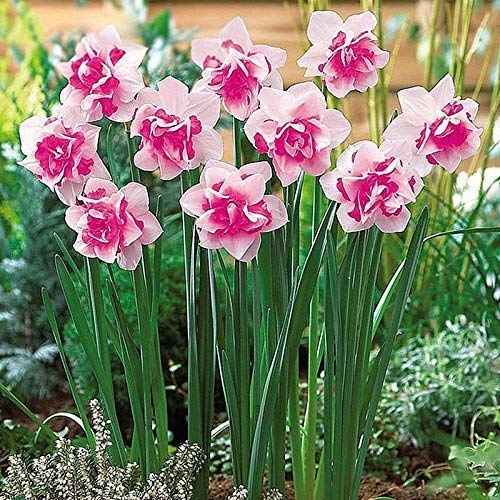

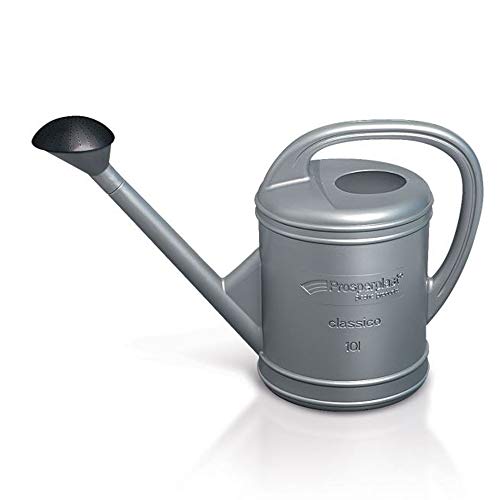
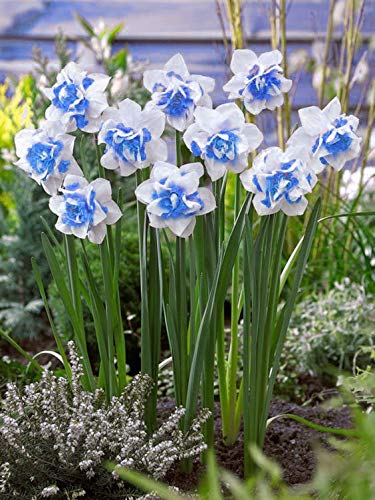
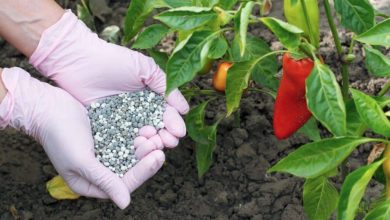

![Photo of Japanese Aucuba: [Cultivation, Care, Substrate, Irrigation, Pests and Diseases]](https://www.complete-gardening.com/wp-content/uploads/2021/06/Sembrar-Aucuba-japonica-390x220.jpg)
![Photo of The Largest Tree in the World: [Height, Location and Characteristics]](https://www.complete-gardening.com/wp-content/uploads/2022/08/the-largest-tree-in-the-world-height-location-and-characteristics-390x220.jpg)